Moss Wood Newsletter Summer News Issue #86, November 2014
Moss Wood 2013 Chardonnay
Moss Wood 2012 Pinot Noir
Moss Wood 2014 Semillon
Moss Wood Ribbon Vale 2012 Cabernet Sauvignon
Moss Wood Ribbon Vale 2012 Merlot
Moss Wood Ribbon Vale 2014 Sauvignon Blanc Semillon
Moss Wood 2013 Amy's
Moss Wood 2013 Chardonnay
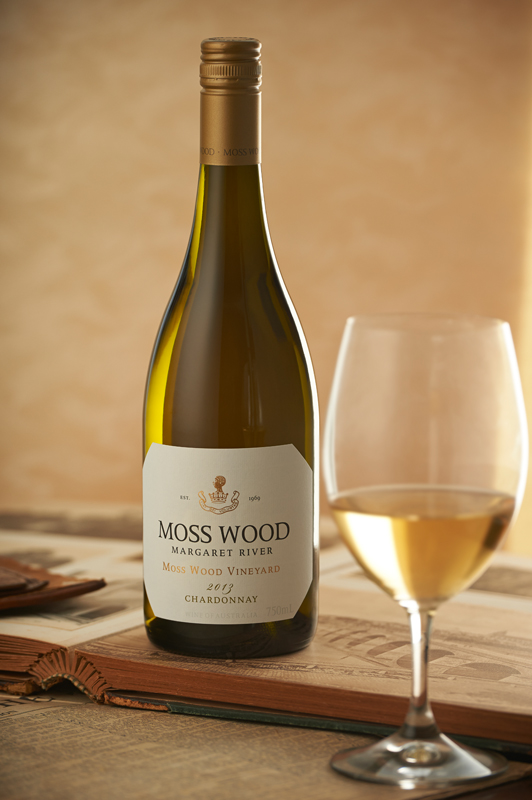
Vintage Notes
The 2012/13 growing season can be summarised with one word – abundant. We had abundant rain during calendar year 2012 then abundant sunshine during the growing season which combined to produce an abundant crop. This was despite a formidable hailstorm on 30th November 2012 doing quite a bit of harm to the vineyard.
Starting with the rainfall first, we recorded 941mm rain for the year, ever so slightly below the average of 971mm. More importantly, 312mm fell during the growing season, so there was plenty of soil moisture available to the vines and most of this fell at times that didn’t disrupt the flowering. Hence, the abundant crop.
Temperatures followed the theme of the last 8 vintages and so we experienced consistent warmth. We had only one 400 day, on New Year’s Eve, but enjoyed consistent warmth. It turned out that January was slightly cooler than the previous year but February went the other way, and warmed up. Regardless, the vines had plentiful opportunity to ripen the crop, experiencing just over 1000 hours between 18 and 280 C, when they only need about 700 hours to ripen the crop.
That hailstorm was a beauty and we have to be honest and say we were surprised and delighted that the yield was as good as it was. We can only guess why this might have been. Perhaps the explanation lies in the fact the storm occurred relatively late in the season, by which time the Chardonnay had full foliage and was properly shoot-positioned. This meant the shoots and leaves were all standing vertically, and above, the bunches, providing some shelter.
Certainly most bunches were hit and damaged but this was far less extensive than we initially thought.
Our best estimate at the time was that about 10% of the crop was lost. How was it then that a near identical event in December 1996 took out 80% of the crop? It seems we just got lucky because, for the record, the yield was 10.11 tonnes per hectare, some 44% above average.
The rest of the season proved uneventful. It was almost exactly average in length taking 112 days to go from flowering to harvest, as opposed to the mean of 111 days, and at that point the ripeness was 13.00 Baume when typically we pick at 13.10. We successfully controlled disease and birds and had some very high quality fruit to play with in the winery.
Production Notes
Median Harvest Date: 24th February, 2013
Harvest Ripeness: 130 Baume
The fruit was hand-picked, delivered immediately to the winery and then whole bunch pressed and the juice was collected in stainless steel tank and settled for 48 hours. After settling, the clear juice was racked to a second stainless steel tank, allowed to warm up and then was seeded with a pure yeast culture.
A small percentage of the lighter settling solids was also included. Once fermentation was under way, the juice was racked to 225 litre French oak barrels, 28% new, where it underwent both the alcoholic and malolactic fermentations.
At the end of June 2014, after 15 months in barrel, all the barrels were racked and blended in a stainless steel tank and the wine was prepared for bottling. It was fined with bentonite and isinglass and then sterile filtered and bottled on 8th July, 2014.
Tasting Notes
Colour and condition:
Medium to deep straw hue, with some green tints; bright condition.
Nose:
A bright nose with Chardonnay’s floral notes in the ascendency – peaches, melons and blossoms all contributing to a generous fruit aroma. Underneath there are complex notes of limes, roast nuts, toast, spice and malt.
Palate:
Bright fruit notes also prevail on the palate, with lively peach, melon and lime flavours, enhanced by crisp acidity and medium to full body. The wine has good length, with an interesting combination of caramel, malt and roast almonds, as well as some light, toasty oak characters.
Cellaring:
As is so often the case with good Chardonnay, this wine has such bright fruit notes and complexity, it can definitely be enjoyed as a youngster. However, it is also one for the cellar and will gain a more complex nose as the bottle bouquet builds over the next 10 years. The palate will soften and become perceivably richer, so it will drink consistently for at least a further 10 years after that.
Moss Wood 2012 Pinot Noir
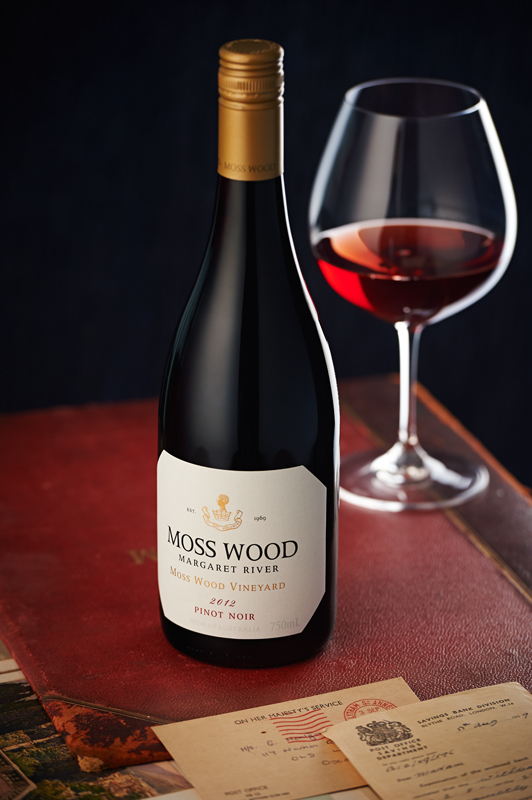
Vintage Notes
A classic year for Margaret River, with good rainfall at the right times, consistent warmth without excessive heat and slightly above average crops - all the right ingredients for a good vintage.
For calendar year 2011, rainfall finished slightly up and so the vines had plenty of soil moisture, so crucial for unirrigated vineyards.
In addition, temperatures through the growing season were above average, although not excessively. This allowed the vines to ripen consistently, especially during December and January, when temperatures were about 1-20 C above average. For example, the mean maximum temperature for January 2012 was 30.90 C, nearly 20 above average. The peak of the heat came on 26th, 27th and 28th of that month, when we experienced 39.70, 40.80 and 37.90, respectively. This was quite a spike, but fortunately it didn’t last. Temperatures eased in February, usually our warmest month, when we averaged 29.10 C, nearly 10 below the mean. From then on, it was plain sailing.
The good growing conditions meant crop levels on both clones of Pinot Noir were above average. Typically, the vineyard will yield around 6.40 tonnes per hectare but in 2012 it was a record-setting 8.62, a 35% increase.
One of the curiosities of the vintage is the seeds were slow to ripen. We suspect this may have been a product of this higher yield. In the hope of getting better tannin balance, we adopted our usual strategy of waiting until they were hard and crunchy, but this meant leaving the fruit on the vine for longer. In an average year, we pick Pinot Noir 100 days after the flowering and its usual sugar ripeness at that point is approximately 130 Baume. However, in 2012 the seeds didn’t ripen until 114 days after flowering, by which time the sugar ripeness had reached approximately 13.60 Baume. The resulting wine is rich and perfumed and one of the prettiest we’ve made in recent times.
It may also be that the fruit intensity was assisted by the other technique used to enhance quality in high yielding years - “saignee”. This is where some juice is drained off prior to fermentation, to help improve the concentration of colour and flavour and in 2012 we reduced the juice volume by 20%.
Finally, there were no negative quality influences, with the birds kept under control with the application of the nets and our fungicide spray program was successful in preventing disease.
Production Notes
Median Harvest Dates:
Clone D4V2 – 23rd February, 2012
Clone D5V12a – 27th February, 2012
Harvest Ripeness:
Clone D4V2 – 13.50 Baume
Clone D5V12a – 13.80 Baume
As with all Moss Wood wines, the fruit was hand picked and then destemmed into small, open, stainless steel fermenters. Each batch was then cooled to 80 C and allowed to soak for 72 hours and then allowed to warm to ambient temperature. At this point, the batches were seeded with pure yeast culture and fermentation proceeded, with temperatures controlled to a maximum of 300 C. Hand plunging was carried out 3 times per day, for extraction of colour and flavour.
After 2 weeks, each batch was pressed to stainless steel tank and underwent malolactic fermentation. Once this was completed the wine was racked to oak at the beginning of April, 2012. All the barrels were 225 litre French oak and 12% were new.
After 18 months in barrel the wine was racked to stainless steel tank and prepared for bottling. Fining trials were carried out and it was decided to treat the wine with a small dose of egg whites. After this it was sterile filtered and bottled on 14th November, 2013.
Tasting Notes
Colour and condition:
Medium to deep ruby hue; bright condition.
Nose:
Bright fruit aromas presenting a lifted combination of musk, roses,
strawberries and cherries and then underneath some earth and tar. Great fruit depth but with the beginnings of Pinot Noir’s fascinating complex nuances. Returning to the nose, each visit reveals a new component.
Palate:
The wine follows a similar thread on the palate. There are initial flavours of strawberry and quince jelly, giving the wine a long and generous feel but it’s not heavy in any way. Rather, it is bright and fresh. There is also the beginning of Pinot’s beguiling earthiness – mushrooms, tar and leather, all waiting to
evolve.
Cellaring:
This is definitely a serious cellaring wine and will repay at least 15 years of patience. Over that time it will develop its full bottle bouquet and round and soften. This does not mean it will deteriorate once it passes this mark. Rather, it will hold this plateau of softness and complexity for at least another decade.
Moss Wood 2014 Semillon
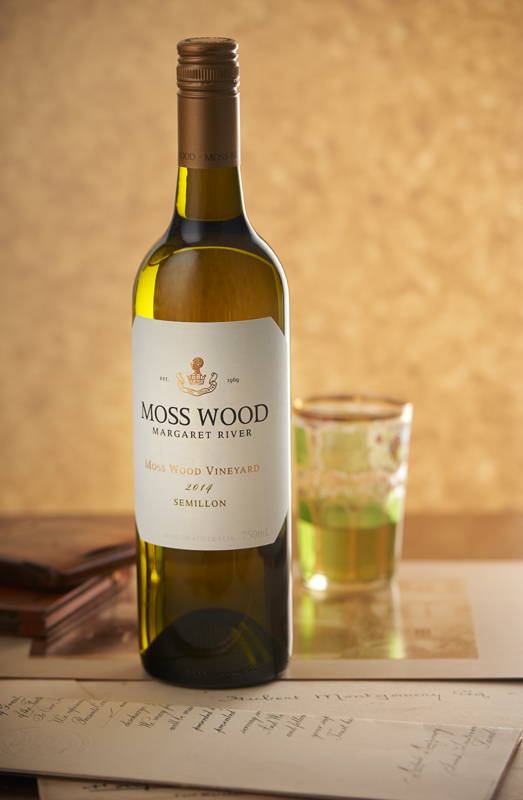
Vintage Notes
Following the theme of the last 8 years, the 2013/14 growing season gave us consistent warmth, albeit somewhat cooler during December, January and February than has been the case during that time. This is best illustrated by the maximum temperatures, which were around one degree cooler than average for those months, although perhaps fortunately, March bucked the trend and temperatures returned to the mean. This is an interesting pointer to the wine styles for the year, with all varieties showing good aromatic freshness, an especially appealing attribute in white wines.
At the same time as this, we had regular rainfall. In fact, calendar year 2013 is one of our wettest on record, where we recorded a total of 1219mm of rain. Some 326mm fell during the growing season, so the vines had plenty of moisture.
One of the downsides of all the rain, combined with the lingering effects of the 2012 hailstorm, is that yields in 2014 were consistently low. Part of the problem stems from the wet, cool conditions interrupting the vines flowering. Semillon yield, at 5.46 tonnes per hectare, was down 48%.
The lower yields are probably reflected in the length of the season, where the period between flowering and harvest was 97 days, 10 days earlier than average. At the same time, the vines got through more ripening because the fruit was harvested at 130 Baume, slightly riper than the mean of 12.6°.
To summarise all this, we managed to get everything safely through to harvest and without bird or disease damage and delivered some very flavoursome grapes to the winery.
Production Notes
Median Harvest Date:
20th February, 2014
Harvest Ripeness:
130 Baume
All fruit was hand harvested and delivered immediately to the winery and destemmed, crushed, chilled and transferred into the press. The juice was extracted and pumped into a stainless steel tank where it was settled for 48 hours and then racked, with a small percentage of solids, to a second stainless steel tank. It was then seeded with pure yeast culture and allowed to ferment at 180 C. Once dryness was reached, the wine was racked off its gross lees and prepared for bottling.
Fining trials were carried out and it was decided to treat the wine with bentonite, for heat stability and with gelatine, to improve tannin balance. The wine was sterile filtered and bottled on 7th July, 2014.
Tasting Notes
Colour and condition:
Medium to deep straw hue; bright condition.
Nose:
A classic combination of Semillon fruit aromas - figs, grapefruit, lemon sherbet and leaf. These combine with an interesting complex background of mushrooms and lanolin.
Palate:
Full bodied but with crisp acidity, combined with mouth-filling grapefruit, fig and honey notes, with an interesting blossom note at the end. The structure is perfect for cellaring, with fresh acidity and just a touch of tannin, although the fruit depth and balance makes it almost unperceivable.
Cellaring:
One of our finest ever Semillons, it has really enjoyable young fruit flavours and so is delicious to drink now.
However, with its concentration and complexity it is a tremendous cellaring prospect and will reach its peak over the next 15 years, developing a rich and toasty nose and soft round palate and should drink beautifully through until at least 25 years of age.
Moss Wood Ribbon Vale 2012 Cabernet Sauvignon Merlot
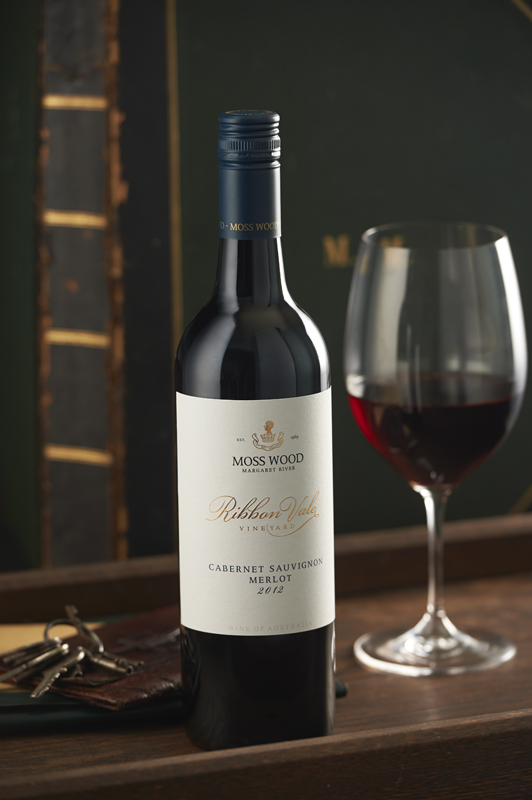
Vintage Notes
The warm conditions meant the length of the flowering to harvest growing season was slightly shorter. Cabernet Sauvignon was 6 days early at 113 days; Merlot was only one day early, at 115; and
Cabernet Franc was 2 days early, at 117.
Naturally, ripeness was good for all 3 varieties. Cabernet Sauvignon was harvested at its average of 13.60 Baume; Merlot was slightly riper than average at 13.70; and Cabernet Franc almost average at 13.30.
Yields were also good, with Cabernet Sauvignon the leader, producing 9.12 tonnes per hectare, 19% above average.
Finally, there were no negative quality influences, with the birds kept under control with the application of the nets and our fungicide spray program was successful in preventing disease.
Production Notes
Median Harvest Dates:
Cabernet Sauvignon – 17th March, 2012
Merlot – 8th March, 2012
Cabernet Franc – 8th March, 2014
Harvest Ripeness:
Cabernet Sauvignon – 13.5° Baume
Merlot – 13.7° Baume
Cabernet Franc – 13.5° Baume
All the fruit was hand picked and destemmed into small, open fermenters. Each batch was seeded with a pure yeast culture and was allowed to ferment at up to 28°C. Colour and flavour were extracted by hand plunging 3 times per day. After approximately 2 weeks on skins each batch was pressed to stainless steel tanks for malolactic fermentation and after completion, racked to oak. All barrels were 225 litre French oak and 10% were new.
In December 2013, the final blends were prepared. The Cabernet Sauvignon Merlot is a blend of 63% Cabernet Sauvignon, 33% Merlot and 4% Cabernet Franc.
After blending the wines were returned to barrel, where they remained until July 2014, at which point they were racked to stainless steel and prepared for bottling. Fining trials were carried out and the Cabernet Sauvignon Merlot was not fined.
The wines were then sterile filtered and bottled on 12th August 2014.
Tasting Notes
Colour and condition:
Very deep brick red hue; bright condition.
Nose:
Cabernet Sauvignonbased wines never lack for complexity and this wine has it in spades. Their fruit aromas are a combination red currants and mulberries backed up with cedar, tobacco, leather and tar. Also, from a vineyard renowned for its masculine, slightly brooding demeanour, this is a slight change, with a generosity and friendliness not often seen in young Ribbon Vales.
Palate:
This theme continues on the palate, where we see a balance and generosity not often found with this vineyard. The red currant and mulberry flavours are generous and long, filling the mouth. The wine has full body, with concentrated and supple tannins giving the wine a long and well balanced finish. This is a slightly cooler vineyard than Moss Wood and it seems that extra warmth in 2012 has really suited it
Cellaring
With this balance and concentration, it will be a long-lived wine. For those who like their Cabernets with lots of complexity, it will take at least 15 years to develop a reasonable level of bottle bouquet. After that it will be anybody’s guess but 30 years cellaring will be easily achieved for those with the patience.
Moss Wood Ribbon Vale 2012 Merlot
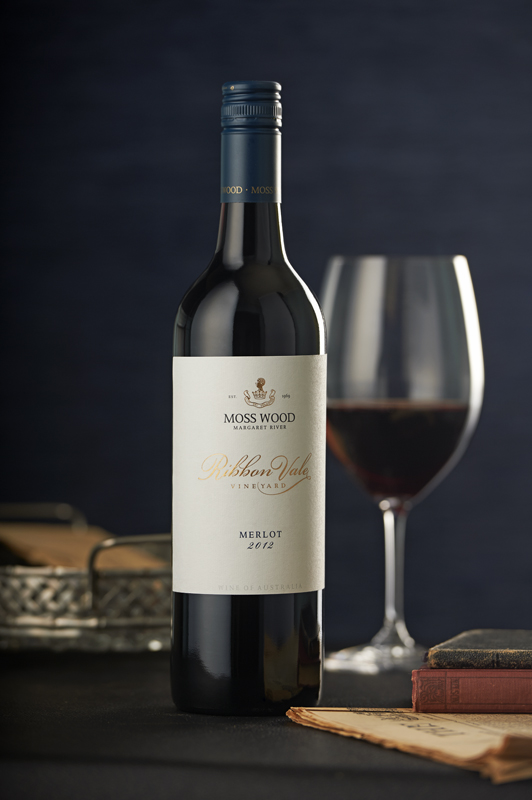
Vintage Notes
The warm conditions meant the length of the flowering to harvest growing season was slightly shorter. Merlot was only one day early, at 115; and Cabernet Franc was 2 days early, at 117.
Naturally, ripeness was good for both varieties. Merlot was slightly riper than average at 13.7°C and Cabernet Franc almost average at 13.3°C.
Yields were also good, albeit slightly below average. Merlot cropped at 7.98 tonnes per hectare, down 7% and Cabernet Franc produced 8.8 tonnes per hectare, down 2%.
Finally, in keeping with the theme of 2012, there were no negative quality influences, with the birds kept under control with the application of the nets and our fungicide spray program was successful in preventing disease. All we had to do was get it safely into the winery and make sure we protected what Mother Nature had given us.
Tasting Notes
Colour and condition:
Deep brick red hue; bright condition.
Nose:
A really youthful appeal, with an immediate impression of dark fruit aromas – black berries, mulberries and black currants.
A second viewing shows the beginnings Merlot’s “darker” side, with tar, leather and earth just starting to add complexity into the
background.
Palate:
The classic Merlot palate, with rich, dark berry flavours like black jubes filling the front and mid palate. Firm tannin then takes over and gives the wine a linear, astringent but not too aggressive finish, which is juicy and concentrated.
Cellaring:
Merlot has such bright and appealing youthful fruit, it’s always enjoyable to drink as youngster and this wine is no different. However, with its juicy tannins it will hold together well and gradually develop a tarry and leathery bottle bouquet over the next 15 to 20 years.
Production Notes
Median Harvest Dates:
Merlot – 8th March, 2012
Cabernet Franc – 8th March, 2012
Harvest Ripeness:
Merlot – 13.7° Baume
Cabernet Franc – 13.5° Baume
All the fruit was hand picked and destemmed into small, open fermenters. Each batch was seeded with a pure yeast culture and was allowed to ferment at up 28°C. Colour and flavour were extracted by hand plunging 3 times per day. After approximately 2 weeks on skins each batch was pressed to stainless steel tanks for malolactic fermentation and after completion, racked to oak. All barrels were 225 litre French oak and 10% were new In December 2013, the final blends were prepared. The Merlot is blended with 8% Cabernet Franc.
Readers will note this means the wine is not a 100% varietal Merlot. Our reasoning is simple. While Merlot is not given great quality status in Australia things are different overseas. Merlot is the most widely planted red grape in Bordeaux and is dominant in the great wines of St Emilion and Pomerol. These Right Bank wines, as they are often known, are amongst the most highly regarded in the region and are the benchmarks against which we are keen to have our own wine judged.
It is also important to note the great wines from the Right Bank are blends. The percentage of Cabernet Franc and to a lesser extent, Cabernet Sauvignon, used in blending varies between the different chateaux and depends on their individual terroir. However, all agree they make their best wines
this way.
Our decisions on the final assemblage are based on careful tasting trials and our experience is similar to the
Bordeaux producers. We can make a very good wine from Merlot but we always improve it when we include a small percentage of Cabernet Franc. A large contribution by the latter, say greater than 10%, almost always lower the quality, until the blend approaches 50%, at which point the quality improves.
Funnily enough, although it improves, the overall quality is still not high enough to take it back to the top. After blending the wines were returned to barrel, where they remained until July 2014, when they were racked to stainless steel and prepared for
bottling. Fining trials were carried out and the Merlot was fined with a light dose of egg whites.
The wine was sterile filtered and bottled on 12th August 2014.
Moss Wood Ribbon Vale 2014 Sauvignon Blanc Semillon
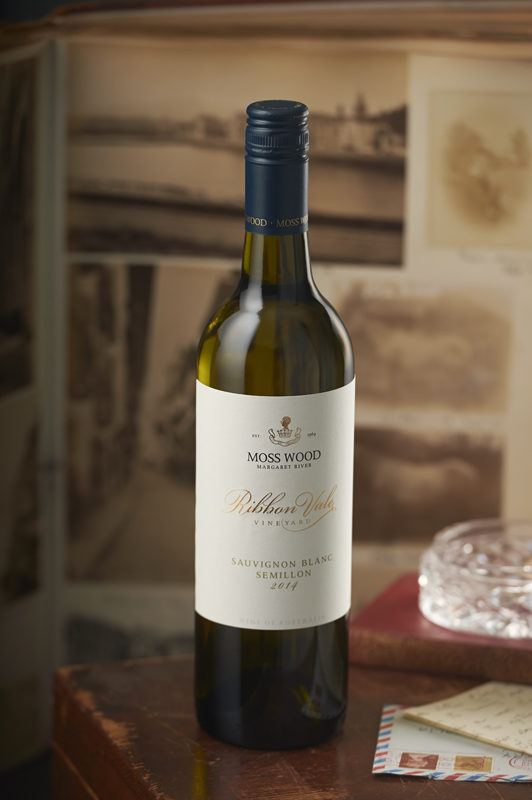
Vintage Notes
Having provided commentary of the 2014 vintage with the Moss Wood Semillon, we won’t repeat it again here, other than to note the features that made it a quality year for Semillon at Moss Wood were also ideal for the Ribbon Vale whites.
Similarly, both the Sauvignon and Semillon were well down with their yields. Sauvignon Blanc was down 12%, at 9.89 tonnes per hectare and Semillon was down 48%, at 5.64 tonnes per hectare.For both varieties, the lower yields led to faster ripening, with Sauvignon Blanc taking 91 days to go from flowering to harvest, 10 days less than usual. Semillon took 104 days, which is 8 days fewer.
There were no quality problems from either disease or birds, although we did have the odd kangaroo hopping around, developing a taste for ripe grapes. Fortunately we remembered to start closing the gate on the roo-proof fence and the problem was resolved!
Production Notes
Median Harvest Dates:
Sauvignon Blanc – 13th February, 2014
Semillon – 6th March, 2014
Harvest Ripeness:
Sauvignon Blanc – 11.4° Baume
Semillon – 13.7° Baume
Both varieties were hand picked and delivered immediately for processing in the winery. There they were de-stemmed, crushed, chilled and transferred to the press. The juice was then pumped to stainless steel tank, where it was settled for 48 hours, after which the clear juice was racked to a second tank and seeded with pure yeast culture for primary fermentation. Both batches fermented at
18° C.
Once primary ferment was completed the two batches were blended and then racked into 225 litre French oak barrels. None of the barrels were new because it was not our intention for the wine to pick up wood characters. Rather, the development that takes place in cask improves the texture of the wine.
After 6 months, the wine was racked into stainless steel and all barrels were blended. The wine was then prepared for bottling and fined only with bentonite. It was then sterile filtered and bottled on 7th October, 2014.
Tasting Notes
Colour and condition:
Pale to medium straw, some green tints; bright condition.
Nose:
Vibrant nose with lifted primary fruits. Initial gooseberry and leafy notes, sitting above lemon sherbet, grapefruit and figs.
Palate:
Medium to full bodied, with fresh acidity; appealing zesty gooseberry
and lemon fruit flavours, some fig and honey richness as well; clean finish.
Cellaring
With such bright fruit characters, this wine is ideal for drinking now, or over the next 2 years. After this it will become more complex, develop some toasty bottle bouquet and should reach full complexity around 5 to 7 years of age.
Moss Wood 2013 Amy's
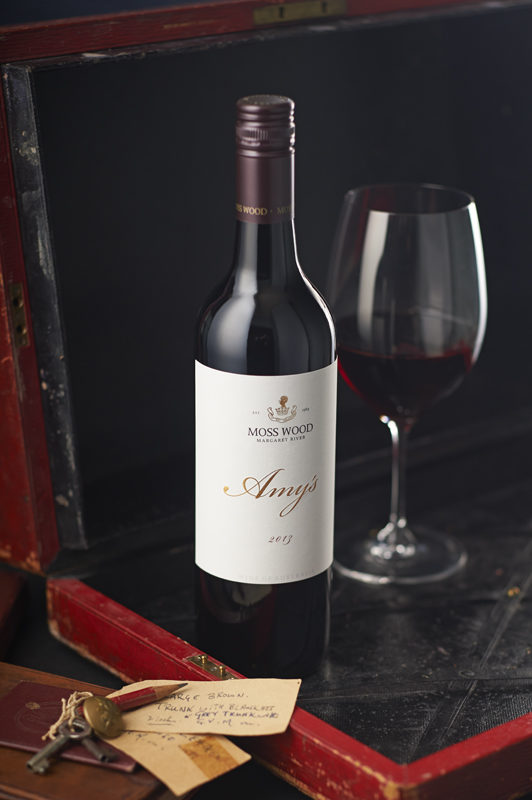
Production Notes
Harvest Dates:
Cabernet Sauvignon – 4th April, 2013
Malbec – 4th April, 2013
Merlot – 22nd March, 2013
Harvest Ripeness:
Cabernet Sauvignon – 13.5° Baume
Malbec – 14.2° Baume
Merlot – 13.8° Baume
Each variety was destemmed and then pumped into closed stainless steel tank for fermentation. Extraction was pumping over, 3 times per day and skin contact was for an average time of 14 days.
After pressing, each batch was allowed to settle on gross lees and was seeded for malolactic fermentation. Once this was completed, the wines were blended and then racked into wood in May 2013.
All the barrels were 225 litres French oak, none of which was new. After 16 months oak aging, in September 2014 all barrels were racked and blended in stainless steel and the wine was prepared for bottling.
Fining trials were carried out and it was decided an egg white fining was beneficial in improving tannin balance. Finally, the wine was sterile filtered and bottled on 8th October, 2014.
Tasting Notes
Colour and condition:
Very deep brick red hue; bright
condition.
Nose:
Excellent combination of red and black fruits – red currants, mulberries, black berries and plums. Despite the presence of all this fruit there is a background of spice, leather and even musk.
Palate:
Straight away there is a spread of mulberry and blueberry fruit flavour, long round and generous, so much so that the tannins sit quietly underneath, waiting for the aging process to reveal them.
The vintage was such that we didn’t make very much of this wine but boy, it’s a gem. The best we’ve made, by some margin.
Cellaring
For a company that makes two Cabernet Sauvignon wines for cellaring, it might make sense when we say that we prefer customers to see Amy’s as a wine for early drinking. We specifically
make to have early appeal.
However, the 2013 is a classic and will certainly improve with 10 to 15 years cellaring – if you can keep your hands off it.
The Story of Amy
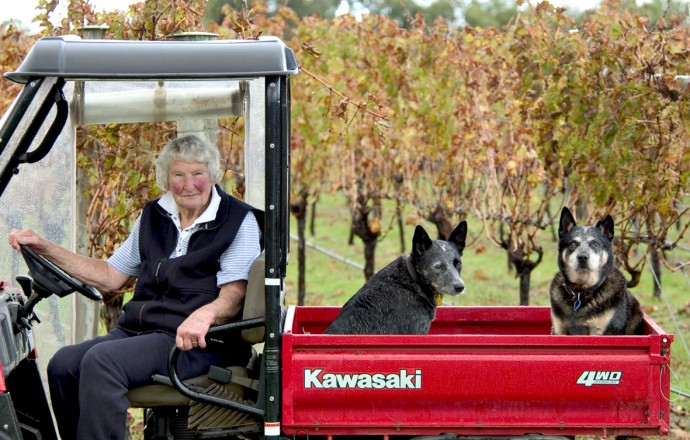
Clare and Keith are frequently asked, “Who is Amy?” It’s a favourite story which they are always happy to share.
It began just prior to the 1985 vintage, when a local Yallingup lad by the name of Ian Bell called into Moss Wood to see if we needed any help through the harvest. He was a big, strapping bloke and Clare and Keith were happy to have him on board. He helped through the vintage, then with pruning and did such a fine job he finished up staying for 21 years.
Ian lived on the family farm, Glenmore, about 10 kilometres north of Moss Wood. Early on in the piece, he invited Clare and Keith for dinner, where they were introduced to his parents, Allan and Sonia but perhaps most importantly, his grandparents, Amy and Bill Beers.
Glenmore, in fact, belonged to Amy and she was a lady with quite a history to share. Born on the property in 1920, she had lived there all her life, apart from a brief stint in Melbourne during the Second World War. Her descriptions of life in the Margaret River
region, especially during the Great Depression, were entrancing and so different to the modern life. She would proudly say the only things they used to buy from outside the farm were kerosene, matches, sugar and tea. Everything else they grew themselves. In 1985 she was still an active, 65 year old beef farmer, running the farm and looking after her cows, who only allowed herself one day off per week, to go and play in the Ladies golf competition at Busselton Golf Club. Without exaggeration, she was a strong and independent woman many decades before it became a social cause.
By 1990, Ian had graduated in Viticulture from Roseworthy College in South Australia and he approached his grandmother about diversifying the farm’s income and planting a vineyard. Amy and her family had always been entrepreneurial and so she happily agreed that one of her valuable beef paddocks could be turned into a vineyard and Ian got the project under way with his first Cabernet planting.
In 1997, Clare and Keith negotiated a 3 year contract with Ian to buy the fruit and in 1998, the first wine was released as the Moss Wood “Glenmore Vineyard” Cabernet Sauvignon.
Ian had also made clear that he would eventually like to leave Moss Wood, return to working on the farm and make his own wine. Clare and Keith were more than happy to encourage him to do so and he released his first “Glenmore Cabernet Sauvignon”, the 2000 vintage, in 2004. Ian finally resigned from Moss Wood in 2006.
The Mugfords didn’t want there to be any confusion between the two products and began looking around for a new name that would link their wine to the Glenmore vineyard. They asked Amy if she’d be happy if the wine was named after her and she very graciously agreed and so, with the 2003 vintage, Clare and Keith released the “Amy’s Vineyard”.
Since then, there were a couple more name changes.
The first was to “Amy’s Blend”, when the wine became a blend of Cabernet Sauvignon, Petit Verdot and Malbec and then over time, everybody, customers and Moss Wood people alike, began to abbreviate the name simply to “Amy’s”, the name we still use today.
Sadly, but fittingly, Amy died on the Glenmore farm in 2007. Although she’s no longer with us to share her stories, we’re sure she’d be proud of the wine and delighted to think it was enjoyed by customers all round the world.
Order
OUR WINES:
Contact
MOSS WOOD:
Location: 926 Metricup Road, Wilyabrup WA
Postal: PO Box 225, Cowaramup WA 6284
Phone: +61 8 9755 6266
Fax: +61 8 9755 6303
Follow us on
SOCIAL MEDIA:
